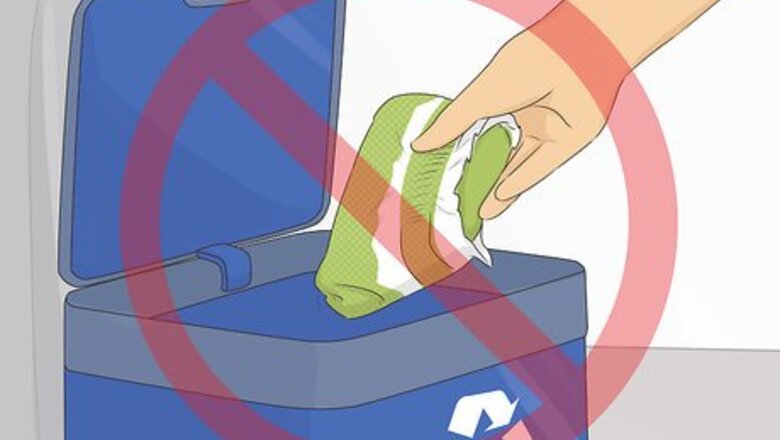
views
Throwing out Diapers at Home
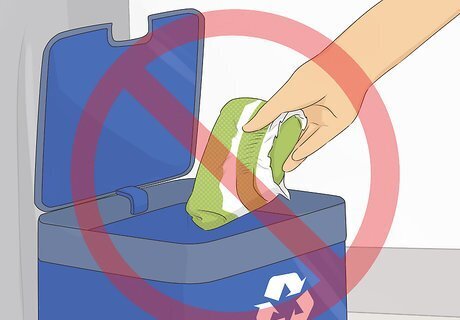
Don’t dump diapers in the recycling bin! No matter where you live or how passionately you believe in recycling, the fact is that disposable diapers simply aren’t recyclable. Faced with a load of dirty diapers, recycling facilities have to sort out these contaminants in order to make sure they don’t damage other recyclable materials, such as paper and plastic. This makes their whole system less efficient and more expensive. If you’re worried about the ecological impact of your diaper waste—after all, normal disposable diapers can take up to 500 years to break down in a landfill—try buying diapers labeled as eco-friendly or biodegradable.
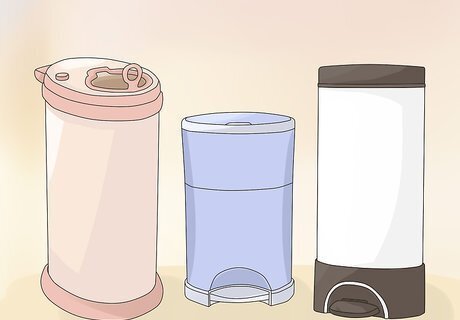
Purchase a separate, hands-free bin for diaper disposal. You need to keep diaper waste separate from other garbage and food waste, so keeping a discrete, washable container with a lid is essential. Purchase a bin with a foot pedal that opens the lid so that you don't have to touch the bin with your dirty hands. Also be sure that you line the bin with a plastic garbage bag so that waste doesn’t touch the sides of the bin. Even if you have a locked closet or maintenance room where you can store your diaper disposal bin, make sure your container is reasonably kid-proof. Purchase a tall, bottom-weighted bin so that your child can’t tip it over or reach into the bin. Some people prefer to buy diaper genies, which seal each diaper into individual bags. If you go this route, just know that the plastic bagging system probably won’t eliminate odor or hygienic hazards entirely.
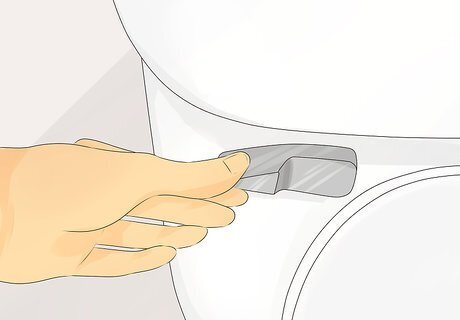
Flush solid waste down the toilet. Getting rid of the solid waste from your baby’s diaper before disposal will reduce odor and bacteria, as well as make it so that your diaper bin doesn’t fill up quite so quickly. Using gloves or a piece of toilet paper, remove the waste with your hand and drop it into the toilet. Depending on where you live, you may not be required to take this step. In the U.S., for example, disposable diapers and their contents are considered municipal solid waste, meaning that they may be safely disposed without first emptying out the solid waste.
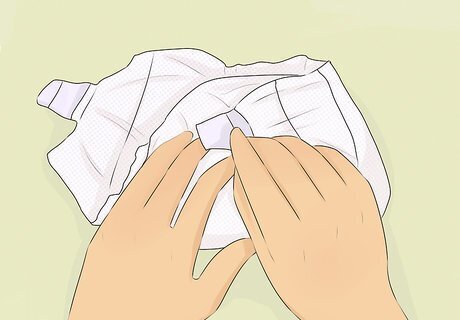
Roll up the diaper around the dirty inner lining. In order to keep the diaper from smearing or dumping its contents once it’s in the disposal bin, roll it up into a tight coil. Use the adhesive strips on the side to help seal it closed.

Put the rolled-up diaper in your diaper pail and close the lid. Storing your dirty diapers in a special, closable diaper pail will keep the bacteria-ridden human waste from contaminating other surfaces and items in your home. Just be sure that you place the diaper into the bin by using the foot pedal, as opening the lid with your hands can infect the lid and outer surface of the container. If you’re using latex gloves to protect your hands, put these into the diaper bin along with the soiled nappies.
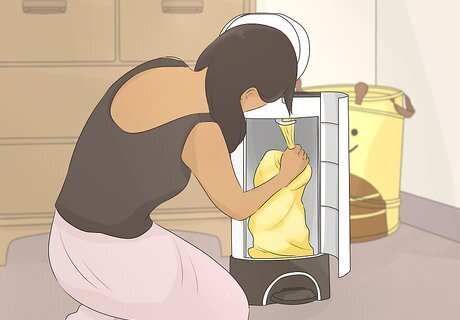
Remove the garbage bag liner when your bin is full. As soon as the volume of dirty diapers in your pail reaches the brim, you should transfer it to the outdoor trash bin. Just don’t wait until your diaper pail is overflowing or jammed-up, as this can increase the likelihood of contamination. If you’re running out of space, either empty the pail and take it to an outdoor garbage bin, or purchase a second pail to store overflow from the first.

Sanitize the inside of the bin with soap and disinfectant. While the container is still empty, clean out the inside with soap and water in order to get rid of dirt and grime. Then spray it with a household disinfectant or bleach to kill germs and bacteria. If you find that a lingering stench clings to your diaper pail even after frequent cleanings and disinfectants, try sprinkling some baking soda, cloves, or old coffee grounds in the bottom. Dryer sheets and coffee filters may also help mitigate stubborn smells.
Disposing of Diapers on the Go
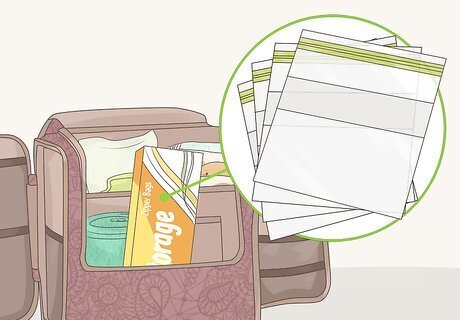
Pack some sealable plastic bags into your portable diaper kit. Chances are, you already have a baby-care kit containing necessary supplies such as diapers, snacks, wipes, and toys. To make sure you’re always ready to discreetly and safely dispose of your baby’s diapers, tuck a few sturdy plastic bags into this kit and make sure you renew your supply daily. Plastic bags with zips are particularly helpful, as they’ll keep waste and moisture contained in the event that you have to travel with the bag for a period of time. You can also find scented bags at many baby supply and general retail stores.
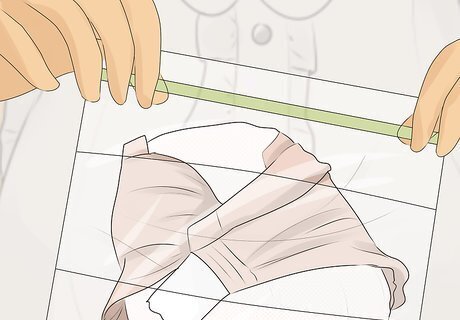
Roll the used diaper into one of your plastic bags. While your home diaper disposal routine might not include this step, it’s essential when you’re out of the house. Pop it into one of the bags you’ve brought along and tightly seal it before looking for an appropriate waste basket to put it in. If you’re near a toilet, you can remove and flush any solid waste before doing this in order to minimize bulk and smell.
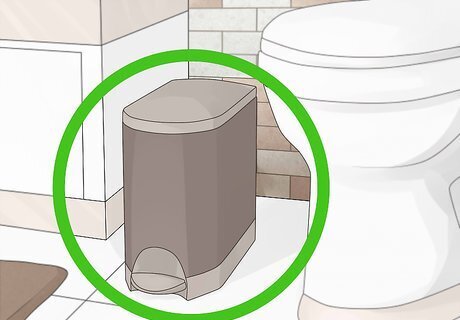
Locate a waste bin in an appropriate location. While it may seem like all trash is created equal, think again. Another person’s home, a restaurant or office, or out the car window are all unhygienic an inappropriate options. Only get rid of your diaper-containing plastic bag in an outdoor bin or one located in a bathroom. If you’re at a friend’s house, ask where you can dispose of the diaper. If none of these hygienic options are readily available, you’ll have to carry your bag with you until you find one.
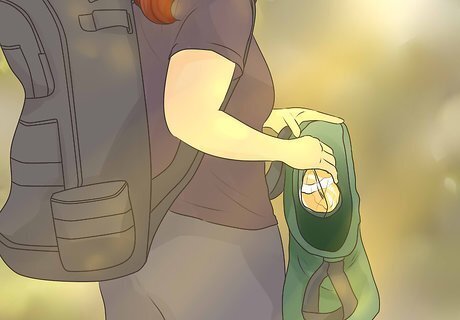
Store soiled diapers in a separate bag if you’re in the wilderness. Disposable diapers pollute the environment if you leave them out, so you’ll need to carry your dirty diapers around with you if you’re camping, hiking or on some other outdoor adventure. If you’re too squeamish to handle this dirty job, use a public campground or well-maintained trail which provides regularly serviced dumpsters.
Composting Your Diapers
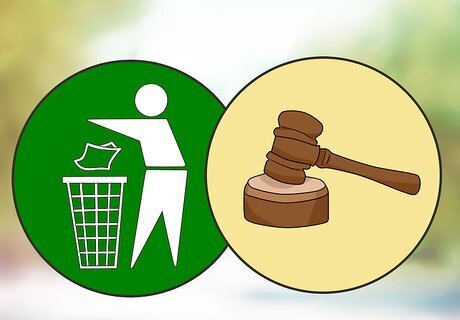
Check out local laws and services available in your area. While most places around the world require that disposable diapers be placed in regular waste bins bound for the landfill, some cities are attempting to reduce diaper waste by providing compost service. In Toronto, for example, you can dump your dirty nappies—along with cat litter and pet waste—into a separate bin that goes to the city compost facility. Be sure to read guidelines carefully to make sure composting services accept diapers. Portland, for example, runs a composting program that collects food scraps and other organic waste, but it does not accept diapers.
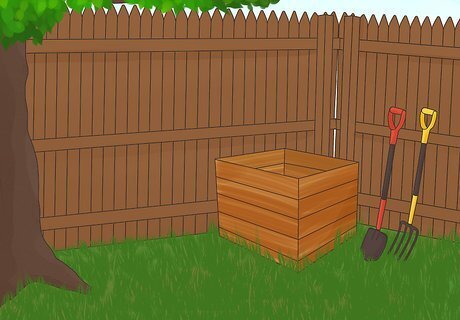
Evaluate your resources to compost at home. If you have a back yard and a pre-existing compost heap, you can probably do your own dirty diaper compost. If not, consider hiring a compost service that will do the dirty work for you. These services pick up your diapers, take them to a large composting facility, and process the waste. Just make sure that you don’t dump your diaper waste into a food garden compost pile. Only put bacteria-laden diaper waste into a compost pile you use for flowers, shrubs, and other vegetation not intended for human consumption.
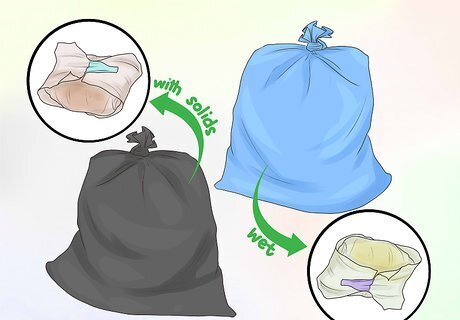
Sort wet diapers from those with solid waste. Composting is a great way to reduce diaper waste, but you should only do so with urine-soaked diapers. Professional, large-scale composting facilities can accept both forms of waste because they can reach the high temperatures needed to destroy constituent bacteria, but your home compost pile cannot. Throw out the diapers containing solid waste in the usual fashion.
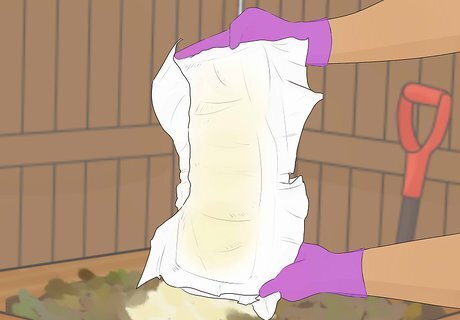
Rip open the diaper so that the filling falls out. Once you’ve accumulated two or three days worth of wet diapers, put on some gloves and take the pile out to your compost heap. Hold each diaper above the heap and tear it open, starting on the side that would have been worn on your baby’s front side. The filling is fully compostable and most often made of sodium polyacrylate and wood pulp, also known as cellulose. The rest of the diaper’s lining, plastic, and paper is not compostable. Set it aside and dispose of it with your other diapers containing solid waste.
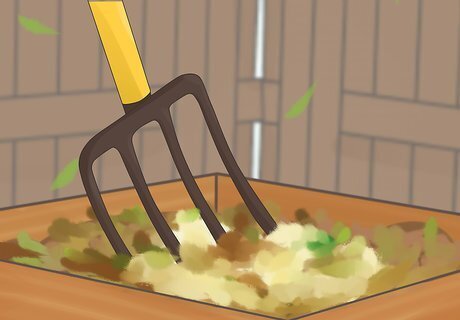
Mix the newly dumped filling into your compost heap. Using a shovel or long hoe, distribute the filling around the heap so that it’s not all lumped in one place. Mix it into the top layer of pre-existing compost so that the fibers will begin to break down.
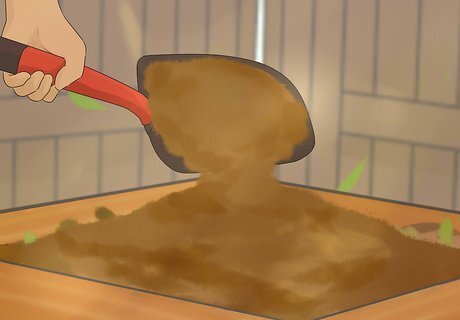
Cover any visible diaper filling with soil or compost. A successful compost pile will break down constituent materials while producing minimal odors. In order to make sure that your diaper filling begins to break down as quickly as possible, layer about half an inch of soil or lower-layer compost on top of it. If you do this correctly, you should see visible results within a month.













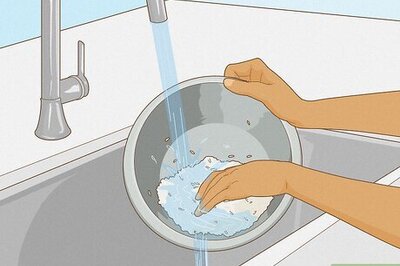



Comments
0 comment